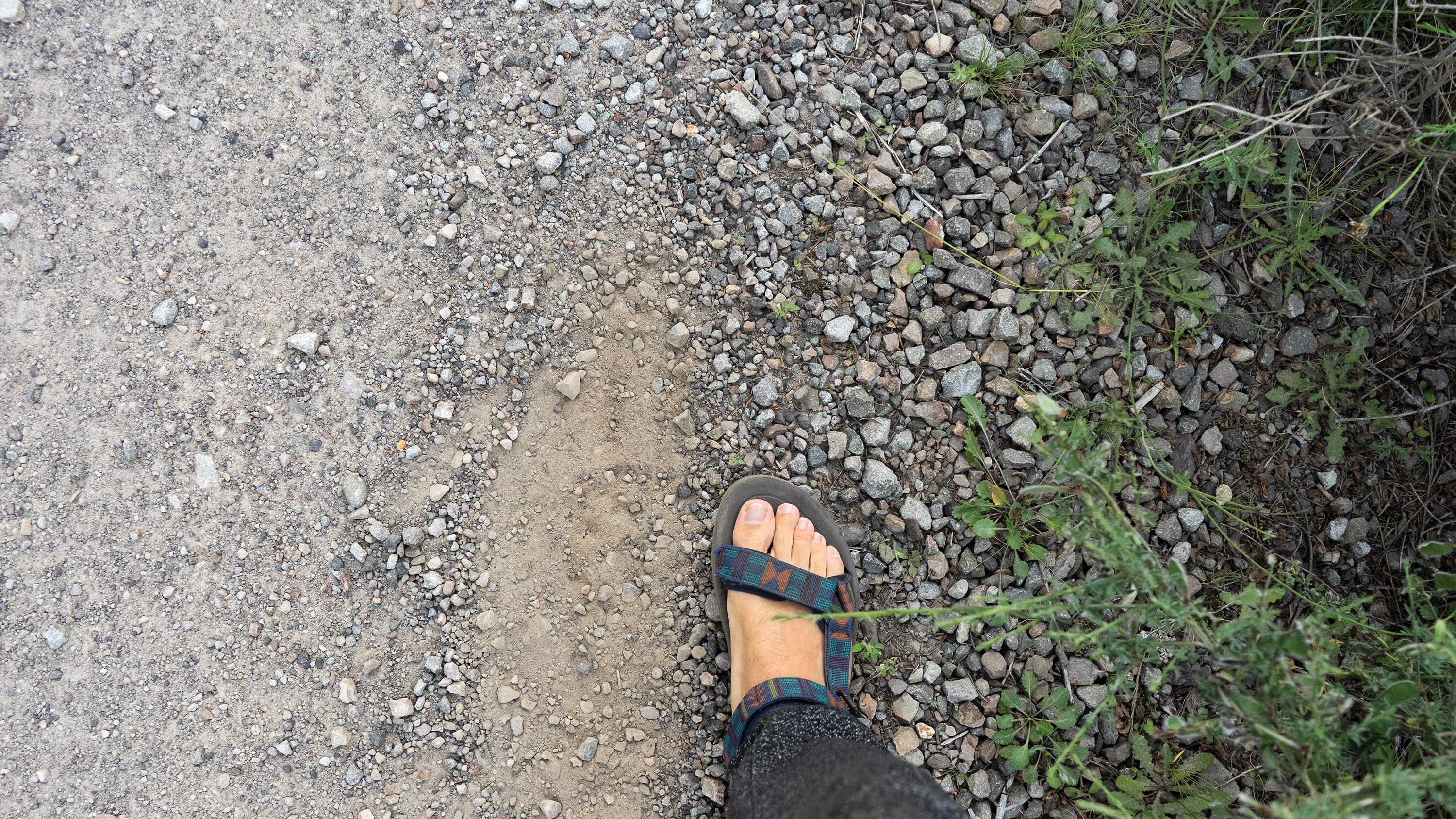Maybe the baby noises would help.
It sounds silly, and felt that way, too—sitting in the isolated woods of the Mount Hood National Forest, aiming a Bluetooth speaker playing a soundtrack of cooing, giggling infants into the dense forest beyond, hoping to lure a creature that clearly doesn't want to be found out of the pines beyond. But I had been told this tactic had worked before, by experts who know a lot more about the reclusive beast's predilections than I do. Who was I, a total amateur in the world of Sasquatchery, to question their methods?
Anyway, I needed to try something. I'd been out along Oregon's so-called Bigfoot Highway for hours, and hadn't seen hide nor hair nor print of the titular cryptid. It was getting dark, and I was losing hope—though, truth be told, I hadn't come here with much to begin with.
Sure, according to the research, if I was going to catch a glimpse of Bigfoot, this is where I would have the greatest chance of it happening. Route 224 near Estacada is home to the highest concentration of Sasquatch sightings in the state, stretching back to the early 1900s. But I can't say I went into this excursion as anything other than a skeptic—I couldn't tell you exactly what all those people thought they were seeing out here, but the chances of it being a 7-foot-tall ape-man that's somehow eluded capture and even halfway conclusive photography for centuries seem close to zero.

Still, I wanted to keep my mind open. So before journeying out, I called upon some of Oregon's top Sasquatch hunters for advice.
One of them was Scot Violette, an anthropologist and founder of Blue Mountain Bigfoot Research in Eastern Oregon. He was the one who suggested the pre-recorded baby sounds—it seems to trigger their curiosity, he says. Violette knows from experience: He claims he saw a Bigfoot only a year ago, while hiking in the Blue Mountains region, and drew it out using similar tactics.
"When I saw one for the first time I realized I just won the friggin' lottery," he says. "I was more excited about taking pictures and trying to document it. I only got my blurry 'Blobsquatch" photo because it was a ways away and the camera wouldn't focus on it. Instead it kept focusing on the trees."
Violette admits that the probability of having my own encounter on my first try is exceedingly low. Despite expert opinions suggesting there may be upward of 1,200 Sasquatches in Oregon, detecting even a single footprint is rare—the Hewkin-Sullivan rule suggests it can take an observer up to 200 hours on the ground to encounter any form of evidence. Just in case, I asked Violette what to do if, by sheer luck, I did come across one.
"You're probably not going to get closer—I know that for a fact," he laughs. "But document everything, and get as many photos as you can. Don't stop taking pictures until you don't see it anymore. After that, go look for footprints where they were standing, hairs where you saw it touch a tree. That evidence is more important than anything. You have nothing else to fear."
Tucking that advice into the back of my head, I grabbed my camera and my camping gear, packed up my car and headed for Bigfoot Country. I drove along the backroads of the Mount Hood National Forest that splinter away from Route 224 and the Clackamas River, away from the crowded campgrounds and loud river floats. I drove in search of seclusion—something I assumed the elusive creature would want, too.
I stopped at a spot about six miles in, in an area known as Mongrel Ridge—the name seemed appropriate, if nothing else. In the distance sat Mount Hood, slowly turning a pinkish hue as the sun began to set on the horizon. I set up camp and started a fire, then wandered 100 yards up the road to present my mark with an offering that I hoped might coax him out of the woods: an apple placed on a tree stump.
Do Sasquatches like apples? Probably. Who doesn't?

Back in the forest, I took Violette's advice and fired up a "Baby Noises" playlist on Spotify. Then, I walked the empty road that ran parallel to camp, scrutinizing every track and formation in the dirt, hoping to find something out of the ordinary. Nothing caught my eye.
As night began to fall, I returned to the dirt road with a headlamp and flashlight. According to another contact I made before my trip, the darker it gets, the better shot I had at spotting one.
"We think these things are nocturnal," says Peter Byrne, referred to in Bigfoot-hunting circles as one of the Four Horsemen of Sasquatchery. (In the late '70s, Byrne found some strange hairs on a thornbush in the Hood River Valley, and turned them over to the FBI for testing—it took 40 years for them to tell him they belonged to a deer.) "We think they lie up during the day and sleep, and come out as the evening advances and spend their time looking for food. Most of the sightings are of these things crossing roads at night."
My surroundings seemed to disappear immediately beyond the light cast from my headlamp while travelling through brush. Every so often the crack of a stick or crunch of pine needles reverberated from the trees beyond. Each time I froze to listen for another sound, or perhaps a pattern of footsteps. But the noises always faded seemingly as soon as I heard them. So I decided to employ another of my senses.
"You'll often smell them before you see them," Byrne had told me. "They reek of a wet dog that's just come in to relax by the fire." Inhaling deeply, the only scents that stood out from the clean and crisp smell of the night air were chilled pine and loose gravel.
I decided to call it a hunt. I made my way back to camp as the fire began to lose its strength and crawled into my sleeping bag. I woke hours later in the midst of complete darkness to winds shaking my tent. Peering outside with the help of a flashlight, all was calm save for the surrounding treetops that churned in the breeze.
The following morning I crawled out of the tent in a daze, scanning the road for prints under the soft daylight. The apple remained just where it was the night before, and tracks were entirely absent from the road—not even a car passed by in the night.
As Violette predicted, my search came up empty. Apparently, I'd have to do this about 50 more times to hope to find even the tiniest shred of questionable evidence. But you know what? I wouldn't be against it. Because here I was in the middle of nowhere, feeling more in tune with nature than I had for quite some time. Sure, I left with no more belief in Sasquatch than I had coming in, but I can't say the search was entirely fruitless.
And who knows? Maybe one of these times, that bump in the night will end up being something I least expect. As Violette told me, "We don't see these things because we're in their woods. We're not going to find them—they're going to find us."

A Leading Sasquatch Researcher Is Opening Oregon's First Bigfoot Museum. We Got a Sneak Peek.
I Camped Out Along Oregon's Bigfoot Highway, Hoping to See Something I Wasn't Sure Was There

